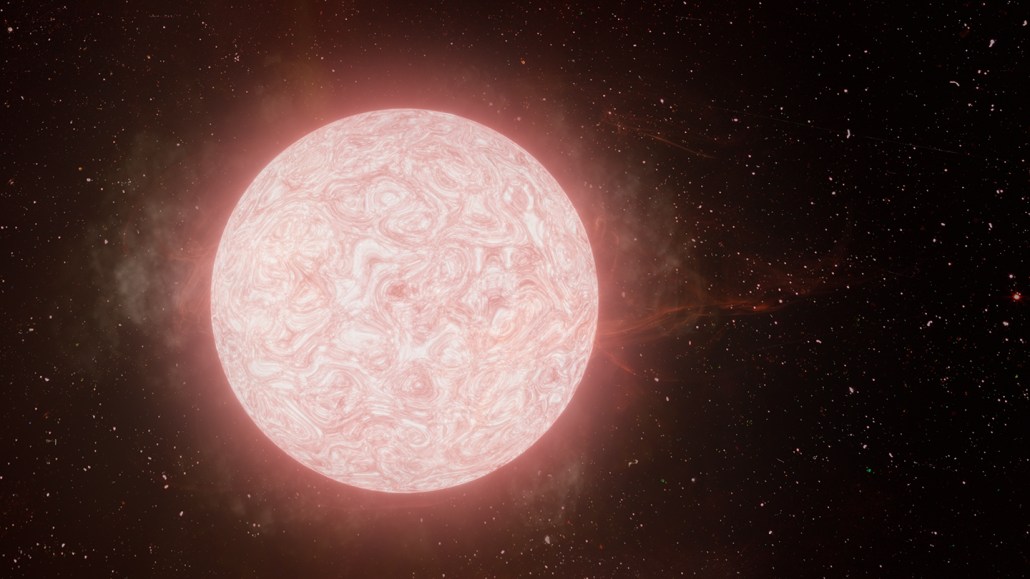
Scientists observed the last gasp of a type of star called a red supergiant (illustrated). The star brightened before exploding, probably signaling that it had cast off some of its outer layers.
W.M. Keck Observatory, Adam Makarenko

Scientists observed the last gasp of a type of star called a red supergiant (illustrated). The star brightened before exploding, probably signaling that it had cast off some of its outer layers.
W.M. Keck Observatory, Adam Makarenko